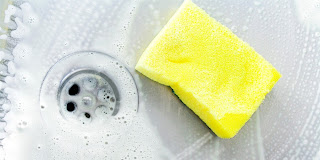How to clean a sponge and how often you should replace it
How to clean a sponge and how often you should replace it
You probably use it every day — multiple times a day if you don’t have a dishwasher — but are you sure that the kitchen sponge you're using to wipe dirty dishes is safe? A study I read from 2017 says probably not.
Researchers in Germany found that icky RG2-related bacteria (the kind that can cause foodborne disease) stays on your sponge even if you clean it in the microwave or in boiling water.
“From a long-term perspective, sponge sanitation methods appear not sufficient to effectively reduce the bacterial load in kitchen sponges and might even increase the shares of RG2-related bacteria,” the researchers also wrote in the paper that they went on to suggest we should be changing our sponges EVERY WEEK, adding that it’s an easily affordable option for staying hygienic.
HOW TO CLEAN A SPONGE
While the study shows that cleaning a sponge doesn't help with all bacteria, it can HELP kill some germs in between replacements. Clean the sponge DAILY in hot, soapy water, then microwave wet for two minutes.
No microwave? Simply wash the sponge then run it through the dishwasher (top rack) with the drying cycle on, or soak the sponge for one minute in a solution of ½ teaspoon of concentrated bleach to 1 quart of warm water.
JUST TAKE IT AWAY?
It’s probably best to just invest in a giant pack of sponges and swap them out on a WEEKLY basis. And when it comes to cleaning your kitchen counters, you may want to opt for an antibacterial kitchen wipe or machine-washable microfiber towel just to be safe.




Comments
Post a Comment